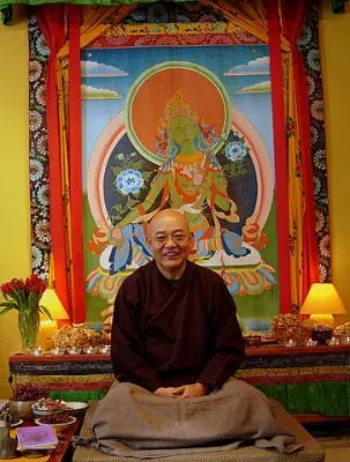Tibetan Buddhism and the Art of Sand Mandalas

The Venerable Losang Samten visited Swarthmore on September 6-10, 2010 and worked in McCabe Library to create of a "Wheel of Life" mandala. Mandalas are a traditional Tibetan art form of sand painting which is an ancient and sacred practice intended to uplift and benefit not only every person who sees it, but also to bless the environment. No two mandalas look the same, yet each is exactly the same in concept. Everyone was invited to visit Samten at McCabe Library and view the progress of his creation. Then on September 11, following a short ceremony and procession to Crum Creek, the mandala was ritually destroyed since the mandala's very impermanence is an important part of the teaching it embodies.
Losang Samten's lecture on September 9 at 4:30 in Science Center 101 focused on the history and philosophy of Tibetan art forms and rituals. His presentation will begin with a short video about the "Wheel of Life," the particular mandala design he is creating in McCabe Library this week. Samten will then speak about mandalas and their role in Tibetan Buddhims, with time for questions and discussion. A reception for Samten followed the lecture.
Born in Tibet, Samten is a renowned Tibetan scholar and former Buddhist monk. His education includes studies at the Tibetan Institute of Performing Arts and the Namgyal Monastery where he received the equivalent of a Ph.D. in Buddhist Philosophy. Samten is the spiritual director of the Tibetan Buddhist Center of Philadelphia and travels extensively sharing his knowledge of Buddhist philosophy and meditation, and his skill in Tibetan ritual arts.



